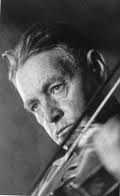Annotation:Sugar Grove Blues: Difference between revisions
(Created page with "__NOABC__ <div class="noprint"> <p><font face="sans-serif" size="4"> Back to [[{{BASEPAGENAME}}]] </font></p> </div> ---- {{#lst:{{PAGENAME}}|abc}} ---- <div style="page-break...") |
No edit summary |
||
| (3 intermediate revisions by the same user not shown) | |||
| Line 10: | Line 10: | ||
<div style="text-align:justify;"> | <div style="text-align:justify;"> | ||
{{break}} | {{break}} | ||
[[File:hammons.jpg|460px|thumb|right|Burl Hammons]] | |||
'''SUGAR GROVE BLUES.''' American, Reel (cut time). A Major. AEae tuning (fiddle). AA'BB'. According to Alan Jabbour, Pocahontas County, West Virginia, fiddler [[biography:Burl Hammons]] (1908-1993) claimed to have composed the tune himself. However, musicologist Alan Jabbour<ref>Carl Fleischhauer and Alan Jabbour, Booklet accompanying the Library of Congress recording "The Hammons Family: A Study of a West Virginia Family's Traditions" (AFS L65-66), 1973, pp. 49-50.</ref> suspects that Hammons was influenced by hearing the reel "[[Grey Eagle]]" played over the radio. The latter tune is fairly popular among fiddler in the South, although it is not a standard in local Pocahontas County repertory. The tunes are not the same, and neither strain is cognate, notes Jabbour, "but both bear a general resemblance." He also finds the high strain similar to "Walking in the Parlor," a tune that was in Hammons' repertoire. Burl named his tune after a grove of sugar maples (which he called "sugars") on nearby Stony Creek. The word "Blues" in the title is something of a misnomer, although a deliberate insertion. "The 'blues' tag reflects the permeating influence of the blues (in titles like this, even when the tunes are not in the usual blues forms) on 20th-century Appalachian music"<ref>ibid.</ref>. | '''SUGAR GROVE BLUES.''' American, Reel (cut time). A Major. AEae tuning (fiddle). AA'BB'. According to Alan Jabbour, Pocahontas County, West Virginia, fiddler [[biography:Burl Hammons]] (1908-1993) claimed to have composed the tune himself. However, musicologist Alan Jabbour<ref>Carl Fleischhauer and Alan Jabbour, Booklet accompanying the Library of Congress recording "The Hammons Family: A Study of a West Virginia Family's Traditions" (AFS L65-66), 1973, pp. 49-50.</ref> suspects that Hammons was influenced by hearing the reel "[[Grey Eagle]]" played over the radio. The latter tune is fairly popular among fiddler in the South, although it is not a standard in local Pocahontas County repertory. The tunes are not the same, and neither strain is cognate, notes Jabbour, "but both bear a general resemblance." He also finds the high strain similar to "Walking in the Parlor," a tune that was in Hammons' repertoire. Burl named his tune after a grove of sugar maples (which he called "sugars") on nearby Stony Creek. The word "Blues" in the title is something of a misnomer, although a deliberate insertion. "The 'blues' tag reflects the permeating influence of the blues (in titles like this, even when the tunes are not in the usual blues forms) on 20th-century Appalachian music"<ref>ibid.</ref>. | ||
{{break|2}} | {{break|2}} | ||
| Line 25: | Line 26: | ||
</font></p> | </font></p> | ||
<p><font face="sans-serif" size="3"> | <p><font face="sans-serif" size="3"> | ||
<font color=red>''Recorded sources'': </font> <font color=teal> - | <font color=red>''Recorded sources'': </font> <font color=teal> - Library of Congress AFS L65-66, "The Hammons Family: A Study of a West Virginia Family's Traditions" (1973). | ||
</font> | |||
</font></p> | </font></p> | ||
{{break}} | {{break}} | ||
Latest revision as of 04:46, 20 December 2019
X:1 T:Sugar Grove Blues N:From the playing of fiddler Gerry Milnes, from a 1974 Brandywine N:Festival fiddle contest tape. The tune is from the repertory N:of Pocahontas County, W.Va., fiddler Burl Hammons (1908-1993). N:Similar (but not cognate) with "Grey Eagle" L:1/8 R:Reel N:AEae tuning (fiddle) Q:"Moderate" D:Library of Congress AFS L65-L66, "Hammons Family: A Study of a West D:Virginia Family's Traditions" (1973) D:https://www.slippery-hill.com/recording/sugar-grove-blues Z:Transcribed by Andrew Kuntz K:A ((3AcB|:A2)[EA]F ED-CD|E2 cA BAcB|A2[EA]F ED-CD|1EFAB A2cB:|2EFAB A2|| [Ae]-[Be]-|:[ce]+slide+[e3e3] [e4e4]|efec B-A[Ae]B|[ce]+slide+[e3e3] [e4e4]|efec- B2 AB| (c[e3e3]) +slide+ [e2e2] ((3efg|a)fec- B A3|([Be]-[c3e3] B)AFD|1 EFAB A2AB:|2EFAA {B}A2||

SUGAR GROVE BLUES. American, Reel (cut time). A Major. AEae tuning (fiddle). AA'BB'. According to Alan Jabbour, Pocahontas County, West Virginia, fiddler biography:Burl Hammons (1908-1993) claimed to have composed the tune himself. However, musicologist Alan Jabbour[1] suspects that Hammons was influenced by hearing the reel "Grey Eagle" played over the radio. The latter tune is fairly popular among fiddler in the South, although it is not a standard in local Pocahontas County repertory. The tunes are not the same, and neither strain is cognate, notes Jabbour, "but both bear a general resemblance." He also finds the high strain similar to "Walking in the Parlor," a tune that was in Hammons' repertoire. Burl named his tune after a grove of sugar maples (which he called "sugars") on nearby Stony Creek. The word "Blues" in the title is something of a misnomer, although a deliberate insertion. "The 'blues' tag reflects the permeating influence of the blues (in titles like this, even when the tunes are not in the usual blues forms) on 20th-century Appalachian music"[2].
